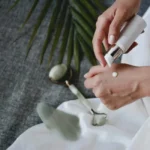I still remember the wave of relief I felt the first time I had a few bags of milk stored away in the freezer. Suddenly, I had options—whether I needed to step out for an appointment, head back to work, or deal with one of those curveball days that babies love to throw at us. But here’s the thing: that stash doesn’t appear overnight. It takes a little planning, a lot of consistency, and the right tools to make it work.
Most moms find it easiest to begin stash building once breastfeeding is well established—usually around 4–6 weeks postpartum. That’s the sweet spot where you can start using a breast feeding pump without worrying about throwing your supply off balance. Here’s what worked for me (and what I wish I’d known from the start).
Timing: When to Start & Ramp Up
Early Weeks vs. Later
In those first weeks, I focused solely on nursing to get my supply regulated. Once we reached the 4–6 week mark, I introduced one regular pumping session. If you’re planning to return to work, starting two to three weeks before your first day back can make the transition a lot smoother.
Optimal Pumping Times
Morning was always my golden window. Milk supply is usually at its highest after a night’s rest, and pumping after an early feed (or even while nursing on one side) made it easy to collect extra without shortchanging my baby.
Pumping Schedule & Frequency
- Begin with one session a day—morning if possible.
- Add more sessions gradually if you need to build your stash faster.
- At work, aim for every 2–3 hours to mimic your baby’s feeding rhythm.
- Try “power pumping” (short bursts clustered together) to encourage supply if you notice a dip.
It really comes down to consistency. Even a few ounces here and there add up surprisingly quickly.
The Right Gear & Supplies
Pump Type & Flange Fit
A double electric pump made all the difference for me. It cut pumping time in half and felt much more efficient. The right flange size was equally important—too small or too large, and comfort (plus output) takes a hit.
Storage Containers & Materials
I relied on BPA-free bags with clear markings. Labeling each one with the date and time, then following a first-in, first-out system, kept my stash organized and fresh.
Supporting Accessories
Cooler bags, ice packs, and spare parts became non-negotiables, especially when I had to pump away from home. Cleaning wipes were another sanity saver on long days out.
Storage Guidelines & Handling
- Fridge: Up to 4 days.
- Freezer: Ideally up to 6 months; a deep freezer can stretch this closer to a year.
- Freeze smaller portions (2–4 oz) to avoid waste.
- Leave space in bags for expansion.
To thaw, I’d either move milk to the fridge overnight or run the bag under warm water—never in the microwave. Once thawed, it’s good for 24 hours.
Maximizing Pump Output
It’s not just about the pump. Staying hydrated, eating nourishing foods, and actually resting (as much as possible) made a noticeable difference for me. Gentle massage during sessions helped milk flow better, and sticking to roughly the same times each day seemed to “train” my body to expect it.
Avoiding Common Pitfalls
- Oversupply: Pumping too much too soon left me engorged and uncomfortable. Scaling back helped until my body found its balance.
- Freezer Waste: A huge stash sounds great, but milk can get freezer burn or go unused. Keeping a realistic stash saved me from tossing precious ounces.
Planning for Work, Travel & Emergencies
I figured out my stash goals by multiplying my baby’s average feed volume by the number of feeds I’d miss in a day. That gave me a practical target. For travel or long outings, I always carried a cooler, ice packs, and extra bags. Being prepared cut down on the stress of pumping away from home.
Role of Equipment like a Breast Feeding Pump
Honestly, none of this would’ve been possible without a reliable breast feeding pump. Features like adjustable suction levels, comfortable flanges, and durable parts made the process so much smoother. Having an efficient double pump also saved me hours in the long run.
One pump I found especially helpful was the All-in-one M5 Wearable Breast Pump – Painlessly Pump by Momcozy. It gave me the flexibility to move around while still pumping efficiently, which turned stash-building into something I could weave into my day instead of a task that stopped everything in its tracks. With Momcozy, I didn’t have to choose between productivity and comfort—I could have both.
Conclusion
Building a breast milk stash doesn’t need to be overwhelming. With the right timing, a steady routine, and smart storage practices, you can create a reliable backup supply that supports your baby—and your peace of mind.
The real key is combining good habits with a dependable breast feeding pump. That pairing makes it possible to pump efficiently, store milk confidently, and head into work, travel, or even those unexpected emergencies without second-guessing yourself. A stash isn’t just practical—it’s empowering.
Also Read-What Exactly Does an E-Learning Marketing Agency Do?



